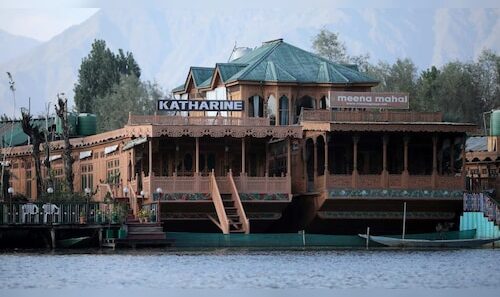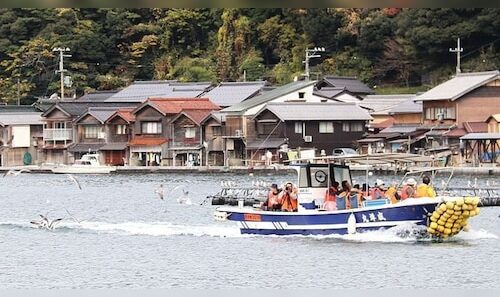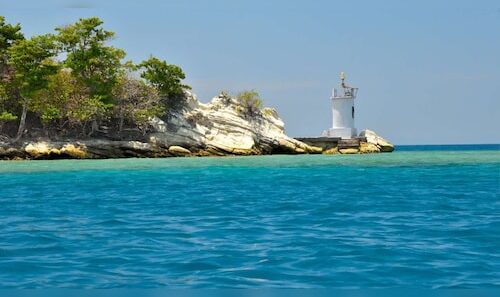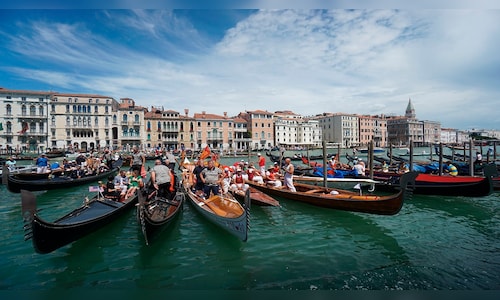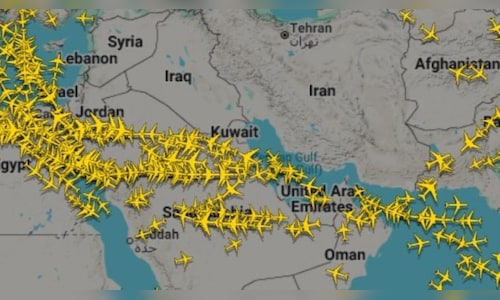Last year, a staggering 747 million international tourists visited the continent, significantly surpassing any other global region, according to the UN’s World Tourism Barometer. Southern and Western Europe attracted over 70% of these travelers.
As the increasing number of visitors strains local housing, water supplies, and the most photogenic spots in the area, protests and initiatives aimed at mitigating overtourism have increased.
Here’s an overview of the situation in some of Europe’s most frequented destinations:
Factors contributing to this surge include affordable flights, the influence of social media, the convenience of travel planning through artificial intelligence, and what UN tourism representatives describe as a robust economic outlook for several affluent countries sending tourists, despite existing geopolitical and economic issues.
Travelers from nations such as the US, Japan, China, and the UK lead the way in international trips, particularly to sought-after locations like Barcelona in Spain and Venice in Italy. These hotspots experience seasonal swells, resulting in excessive demand for housing and essential resources like water.
Also read | Frustrated by overtourism, demonstrators rally in southern Europe
Despite pushback from the public regarding overcrowding, some tourism officials believe that these challenges can be effectively managed with proper infrastructure.
Italy’s Tourism Minister Daniela Santanchè expressed her opinion that visitor flows at crowded attractions such as Florence’s Uffizi Galleries, which houses some of the most renowned artworks globally, could be enhanced using AI, allowing tourists to secure tickets during travel bookings, even months in advance, to mitigate surges.
She disagreed with the notion that Italy — which, like all of its Southern European counterparts, welcomed more international visitors in 2024 than its total population — suffers from an excess of tourists, noting that the majority of visits occur within just 4% of the country’s area.
Also read | Overtourism in Spain: Thousands protest again as rent prices climb
“This is a phenomenon that can be managed,” Santanchè told The Associated Press during an interview in her office last Friday. “Tourism should be seen as an opportunity, not a threat — even for local communities. That’s why we are prioritizing the organization of visitor flows.”
Countries along the Mediterranean are leading the charge. France, the host of the upcoming Olympics and the top international destination, welcomed 100 million international visitors last year, while Spain, in second place, received nearly 94 million — almost double its own population.
Protests have erupted throughout Spain over recent years. In Barcelona, the water gun has emerged as a symbol of the city’s anti-tourism movement, as demonstrators spray unsuspecting tourists while bearing signs that state: “One more tourist, one less resident!”
The strain on infrastructure has been especially pronounced on Spain’s Canary and Balearic Islands, which together host a population of under 5 million people. Each archipelago welcomed more than 15 million visitors last year.
Tourism overcrowding has also troubled Italy’s most frequented sites, including Venice, Rome, Capri, and Verona, the setting of Shakespeare’s “Romeo and Juliet.” On the Amalfi Coast, ride-hailing service Uber offers private helicopter and boat rides during the summer to help guests evade the crowds.
Greece, which experienced nearly four times its population in tourists last year, has faced challenges related to water, housing, and energy shortages in peak summer months, particularly on popular islands like Santorini and Mykonos.
In Spain, anti-tourism activists, scholars, and government officials argue that overtourism is driving up housing prices in city centers and hot spots, thanks to the rise of short-term rentals catering to visitors.
Many lament the transformation of the very neighborhoods that initially attracted tourists.
In Barcelona and elsewhere, activists and researchers report that areas popular with tourists have seen local businesses replaced by souvenir shops, global franchises, and trendy cafes.
On some of Greece’s most-visited islands, tourism has coincided with water shortages, as droughts afflict the Mediterranean nation of 10.4 million.
Also read | As Italy confronts overtourism, Florence bans check-in keyboxes
This week, the Louvre in France, the world’s most-visited museum, temporarily closed due to staff strikes who warned that the facility was deteriorating under the burden of overtourism, leaving thousands of ticketed visitors stranded under the blazing sun.
Angelos Varvarousis, an academic and urban planner based in Barcelona and Athens, who researches the tourism industry, stated that overtourism threatens to create a “monoculture” in many of Europe’s hotspots.
“It leads to the gradual loss and displacement of other social and economic activities,” Varvarousis observed.
The government of Spain is addressing what officials label the country’s most significant governance issue: housing shortages.
Last month, Spain’s government directed Airbnb to eliminate approximately 66,000 properties that violated local regulations — while Barcelona unveiled a plan last year to phase out all 10,000 apartments licensed as short-term rentals by 2028. Officials asserted that this move aims to protect the housing supply for full-time residents.
In other regions, authorities have sought to monitor tourist traffic by restricting overnight stays or imposing fees for cruise visitors.
Beginning July 1, Greece will introduce a cruise tax of 20 euros ($23) for visitors to popular islands like Mykonos and 5 euros ($5.70) for less-visited locales like Samos.
The government is also promoting quieter destinations to visitors.
To address water issues, water tankers from mainland Greece have provided support to arid islands, and desalination technologies have been employed to convert ocean water into drinkable sources.

